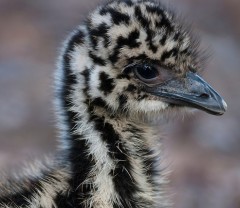Richard Webster was a finalist in the 2013 3 Minute Thesis Competition.
For more info about the 2014 3MT and Grad Research Forum, please visit our 3MTGRF website.
The following article about Richard Webster’s PhD research was published in LiveScience.com on Oct. 23/13.
Camouflage that matches an animal’s “edges” with its surroundings makes it harder for a predator’s eye to track the prey down, a new study reports.
 Using computer-generated moths as prey and humans as predators, scientists tracked the eye movements of 48 human subjects. On moths with disruptive or “edge” coloration, the predator’s eyes lingered longer on the animal and passed over it more frequentlycompared to animals without these markings — even if the rest of the moth’scamouflage did not match the background well.
Using computer-generated moths as prey and humans as predators, scientists tracked the eye movements of 48 human subjects. On moths with disruptive or “edge” coloration, the predator’s eyes lingered longer on the animal and passed over it more frequentlycompared to animals without these markings — even if the rest of the moth’scamouflage did not match the background well.
While the survival of animals with disruptive coloration has been covered in other studies, this is the first time scientists tracked how the confusion occurs, co-author Christopher Hassall told LiveScience. The laser tracking system can distinguish between when a human eyemoves quickly – and doesn’t see much – and when it lingers and fixates on a target. By looking at the times people lingered or passed over a target, it was possible to see how well the moth blended into its surroundings, he said. The study was only limited to human predators, however.
For the full article: http://gradstudents.carleton.ca/2013/grad-student-research/